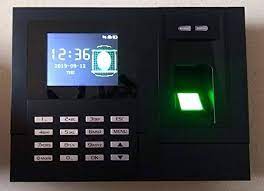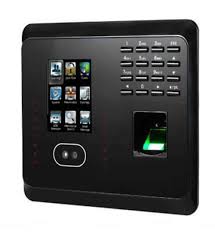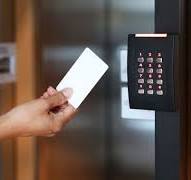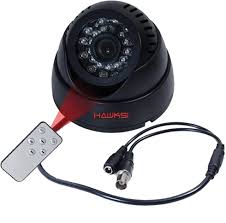Attendance Biometric: Enhancing Efficiency and Accuracy in Workforce Management
In today’s fast-paced and competitive business environment, efficient management of human resources is crucial for the success of any organization. One area that often poses challenges for businesses is attendance tracking and workforce management. Traditional methods such as manual timekeeping or swipe cards are prone to errors, buddy punching, and time theft, leading to inaccurate records and increased administrative burden.
To address these challenges, many organizations are turning to attendance biometric systems as a reliable and secure solution. Attendance biometric technology utilizes unique physical or behavioral characteristics of individuals to accurately verify their identity and record their attendance. The most common biometric identifiers used for attendance tracking include fingerprints, facial recognition, iris scans, palm prints, or even voice recognition.
One of the key advantages of attendance biometric systems is their ability to eliminate time theft and buddy punching. Since biometric identifiers are unique to each individual, employees cannot clock in or out on behalf of their colleagues. This ensures that only the authorized personnel are present at work, enhancing accountability and reducing payroll costs associated with inaccurate timekeeping.
Moreover, attendance biometric systems provide real-time data on employee attendance, allowing managers to monitor workforce patterns effectively. This enables better workforce planning, resource allocation, and scheduling adjustments based on actual attendance records. With accurate data at hand, organizations can optimize productivity levels by identifying trends or patterns that may require attention.
Another benefit of using attendance biometrics is the elimination of administrative tasks associated with manual record-keeping or card-based systems. With automated data collection and integration with payroll software or HR systems, the process becomes streamlined and error-free. This saves valuable time for HR personnel who can focus on more strategic tasks rather than tedious paperwork.
Furthermore, attendance biometric systems offer enhanced security measures compared to traditional methods. Biometric identifiers are unique to each individual and difficult to replicate or forge. This significantly reduces the risk of unauthorized access or identity fraud, ensuring a secure work environment.
However, it is essential to address privacy concerns when implementing attendance biometric systems. Organizations must adhere to data protection regulations and ensure that employees’ biometric information is securely stored and used only for attendance purposes. Transparent communication and obtaining consent from employees are crucial steps in building trust and maintaining ethical practices.
In conclusion, attendance biometric systems have revolutionized workforce management by providing accurate, efficient, and secure solutions for attendance tracking. By eliminating time theft, reducing administrative burden, and enhancing security measures, organizations can optimize their human resources effectively. With the ability to capture real-time data and streamline processes, attendance biometrics contribute to improved productivity levels and overall operational efficiency. As technology continues to advance, attendance biometric systems are likely to play an increasingly significant role in workforce management across various industries.
7 Essential Tips for Managing Attendance Biometric Systems
- Ensure that the biometric system is regularly serviced and maintained.
- Regularly monitor the system to ensure accuracy of data records.
- Keep an audit trail of all attendance records generated by the biometric system for future reference.
- Train employees to use the biometric system correctly and efficiently for accurate data collection and record keeping purposes.
- Keep a backup of all attendance data in case of any technical issues or power outages that may occur with the biometric system
- Make sure that there are sufficient security measures in place to protect employee information stored in the biometric system from unauthorized access or misuse
- Check local laws and regulations regarding employee privacy rights, as some countries may have restrictions on storing personal data collected through biometric systems
Ensure that the biometric system is regularly serviced and maintained.
Ensuring Regular Servicing and Maintenance of Attendance Biometric Systems
Implementing an attendance biometric system can bring numerous benefits to organizations, including accurate timekeeping, enhanced security, and streamlined workforce management. However, to maximize the effectiveness and longevity of these systems, it is crucial to prioritize regular servicing and maintenance.
Like any other technology, attendance biometric systems require periodic upkeep to ensure optimal performance. Here are a few key reasons why regular servicing and maintenance are essential:
System Reliability: Regular servicing helps identify and address any potential issues or malfunctions before they become major problems. This proactive approach minimizes system downtime and ensures that employees can efficiently clock in and out without disruptions.
Accuracy of Data: Well-maintained biometric systems provide reliable data for attendance tracking. Regular maintenance helps calibrate sensors, clean lenses or surfaces, and fine-tune algorithms to maintain accurate readings. This ensures that employee attendance records remain precise and trustworthy.
Longevity of Equipment: By conducting routine maintenance checks, organizations can extend the lifespan of their attendance biometric systems. Regular cleaning, firmware updates, and hardware inspections help prevent wear and tear, ensuring that the equipment continues to function optimally for years to come.
Security Measures: Attendance biometric systems often store sensitive employee data such as fingerprints or facial scans. Regular servicing includes verifying the integrity of data storage mechanisms, implementing software patches for security vulnerabilities, and updating access controls. These measures safeguard employee information from unauthorized access or breaches.
To ensure effective servicing and maintenance of attendance biometric systems:
Engage with Certified Service Providers: Work with authorized service providers who specialize in maintaining attendance biometric systems. They possess the necessary expertise to handle specific brands or models effectively.
Follow Manufacturer Guidelines: Adhere to the manufacturer’s recommended maintenance schedule outlined in the system’s documentation. This may include periodic cleaning instructions or software updates.
Conduct Routine Inspections: Regularly inspect the hardware components of the system for signs of damage, wear, or malfunction. Check cables, sensors, and connectors to ensure they are in good working condition.
Train Staff on Basic Maintenance: Educate your staff on simple maintenance tasks they can perform regularly, such as cleaning fingerprint scanners or reporting any issues promptly. This empowers employees to contribute to the system’s upkeep.
Keep Records of Servicing: Maintain a log of all servicing activities performed on the attendance biometric system. This helps track maintenance history and identify recurring issues that may require further attention.
By prioritizing regular servicing and maintenance, organizations can optimize the performance, accuracy, and longevity of their attendance biometric systems. This proactive approach ensures that businesses continue to benefit from reliable timekeeping data and enhanced security measures while minimizing downtime or disruptions caused by system failures.
Regularly monitor the system to ensure accuracy of data records.
Regularly Monitor the System to Ensure Accuracy of Data Records in Attendance Biometric
Implementing an attendance biometric system can bring numerous benefits to an organization, such as accurate timekeeping, enhanced security, and streamlined workforce management. However, it is essential to understand that the effectiveness of the system relies on its proper monitoring and maintenance.
To ensure the accuracy of data records in an attendance biometric system, regular monitoring is crucial. Here are some key reasons why monitoring is important:
- Identify and Resolve Technical Issues: Like any other technology, attendance biometric systems can encounter technical glitches or errors. Regular monitoring allows you to identify any issues promptly and take appropriate measures to resolve them. This could involve updating software, calibrating hardware components, or addressing connectivity problems. By proactively addressing technical issues, you can maintain the system’s reliability and prevent data inaccuracies.
- Detect and Address User Errors: While attendance biometric systems are designed for ease of use, occasional user errors can occur. Monitoring the system allows you to identify instances where employees may face difficulties while using their biometric identifiers or clocking in/out correctly. Providing timely training or support can help employees understand how to use the system effectively and minimize errors.
- Spot Anomalies or Irregularities: Regularly reviewing attendance data records enables you to spot any anomalies or irregular patterns that may indicate potential issues such as buddy punching or unauthorized access attempts. By promptly investigating these occurrences, you can take appropriate action to maintain the integrity of attendance records and reinforce compliance with organizational policies.
- Ensure Data Integrity: Monitoring ensures that the data recorded by the attendance biometric system remains accurate and reliable over time. It allows you to verify that all entries are being captured correctly without any missing or duplicate records. This helps in maintaining precise attendance information for various purposes such as payroll processing, performance evaluation, or compliance reporting.
- Enhance System Efficiency: By monitoring the attendance biometric system, you can assess its overall performance and identify areas for improvement. This could involve optimizing system settings, upgrading hardware components, or implementing additional security measures. Regular monitoring helps in maximizing the efficiency of the system and ensures that it continues to meet the organization’s evolving needs.
In conclusion, regular monitoring of an attendance biometric system is essential to ensure the accuracy and reliability of data records. By promptly addressing technical issues, user errors, and anomalies, organizations can maintain an efficient and trustworthy attendance tracking process. Monitoring also allows for continuous improvement of the system’s performance and ensures that it remains aligned with organizational goals. With proper attention to monitoring, an attendance biometric system can serve as a valuable tool for effective workforce management.
Keep an audit trail of all attendance records generated by the biometric system for future reference.
Keeping an Audit Trail: Ensuring Accountability and Accuracy in Attendance Biometric Systems
In the realm of attendance biometric systems, maintaining an audit trail is a fundamental practice that organizations should adopt. An audit trail refers to a chronological record of all attendance records generated by the biometric system, capturing details such as date, time, and the individual’s biometric identifier used for verification.
Why is it important to keep an audit trail? Firstly, it serves as a valuable reference for future inquiries or investigations. In case of any discrepancies or disputes regarding attendance records, having a comprehensive audit trail can provide evidence and clarity. This helps in resolving conflicts and ensuring fairness in workforce management.
Additionally, an audit trail acts as a deterrent against fraudulent activities. By keeping a detailed record of attendance transactions, organizations create a sense of accountability among employees. Knowing that their attendance records are being monitored and can be traced back if necessary discourages any attempts at manipulating the system or engaging in unauthorized practices.
Moreover, maintaining an audit trail contributes to data integrity and accuracy. It allows organizations to identify patterns or anomalies in attendance data over time. By regularly reviewing the audit trail, managers can spot irregularities or inconsistencies that may require further investigation or corrective actions.
To effectively implement an audit trail for attendance biometric systems, organizations should ensure that the information is securely stored and easily accessible when needed. Robust data management practices should be in place to protect sensitive employee information while complying with relevant privacy regulations.
Furthermore, it is essential to establish clear policies and procedures regarding the use and retention of attendance records within the organization. This includes defining who has access to the audit trail, how long the records will be retained, and how they will be securely disposed of once they are no longer needed. Adhering to these guidelines ensures transparency and accountability in handling attendance data.
In conclusion, keeping an audit trail of all attendance records generated by the biometric system is crucial for organizations utilizing this technology. It provides a reliable reference for future inquiries, acts as a deterrent against fraudulent activities, and contributes to data integrity. By implementing robust data management practices and establishing clear policies, organizations can ensure accountability and accuracy in their attendance biometric systems, ultimately enhancing workforce management efficiency.
Train employees to use the biometric system correctly and efficiently for accurate data collection and record keeping purposes.
Training Employees for Effective Use of Attendance Biometric Systems
Implementing an attendance biometric system is a significant step towards enhancing accuracy and efficiency in workforce management. However, it is equally important to train employees on how to use the system correctly and efficiently to ensure accurate data collection and record keeping.
Here are some key reasons why training employees on using the biometric system is crucial:
- Familiarity with the System: Not all employees may be familiar with biometric technology or how it works. Providing training sessions will help them understand the purpose, benefits, and proper usage of the attendance biometric system. This will eliminate any confusion or hesitation when using the system.
- Proper Enrollment Process: Training employees on the enrollment process ensures that their biometric data is captured accurately. Employees should be guided on how to position their fingers, palms, or faces correctly during enrollment to avoid any issues in future attendance tracking.
- Correct Usage Techniques: Employees need to be trained on how to use the biometric system correctly each time they clock in or out. This includes proper finger placement, maintaining cleanliness for fingerprint scanners, positioning their face correctly for facial recognition systems, or any other specific instructions related to the chosen biometric identifier.
- Troubleshooting and Error Handling: Despite being user-friendly, attendance biometric systems may occasionally encounter errors or technical glitches. Training employees on basic troubleshooting steps can help them resolve minor issues independently without relying solely on IT support. This will minimize disruptions in attendance tracking and ensure smooth operations.
- Ensuring Compliance: Training sessions provide an opportunity to educate employees about company policies regarding attendance tracking and data privacy. Employees should understand their responsibilities in adhering to these policies and maintaining confidentiality when using the biometric system.
- Encouraging Feedback: Training sessions also serve as a platform for employees to ask questions or provide feedback regarding any concerns they may have about using the attendance biometric system. Addressing their queries and suggestions will help create a positive and collaborative environment.
By investing time and effort in training employees, organizations can maximize the benefits of their attendance biometric system. Accurate data collection and record keeping will enable better decision-making, improved resource allocation, and enhanced productivity. Additionally, well-trained employees will feel more confident and comfortable using the system, leading to smoother implementation and acceptance across the organization.
Remember, ongoing support and periodic refresher training sessions can also be beneficial as new employees join or when system updates occur. By prioritizing training, organizations can ensure that attendance biometric systems are utilized effectively for efficient workforce management.
Keep a backup of all attendance data in case of any technical issues or power outages that may occur with the biometric system
Ensuring Data Integrity: The Importance of Backup in Attendance Biometric Systems
In today’s technologically advanced world, attendance biometric systems have become an integral part of workforce management for many organizations. These systems provide accurate and efficient tracking of employee attendance, eliminating manual errors and time theft. However, like any technological solution, attendance biometric systems can encounter technical issues or power outages that may disrupt their operations.
To safeguard against such unforeseen circumstances, it is crucial for organizations to maintain a backup of all attendance data. This backup serves as a safety net, ensuring that valuable attendance records are preserved even during system downtime or power failures.
By keeping a backup of attendance data, organizations can minimize the impact of any technical issues on their workforce management processes. In the event of a system failure or power outage, the backup data can be used to accurately track employee attendance and ensure that payroll calculations are not affected. This helps maintain transparency and avoids disputes regarding working hours or wages.
Furthermore, having a backup of attendance data enables swift recovery and minimizes downtime when technical issues occur. Instead of starting from scratch or relying on manual record-keeping methods, organizations can quickly restore the system using the backup data. This ensures minimal disruption to daily operations and allows employees to resume their work without unnecessary delays.
It is important to note that backups should be performed regularly and stored securely in multiple locations. Cloud-based storage solutions or off-site servers offer added protection against physical damage or data loss due to unforeseen events such as fires or natural disasters.
Organizations should also establish clear protocols for accessing and restoring the backup data. Designated personnel should have the necessary knowledge and permissions to handle backups effectively. Regular testing of the backup restoration process is recommended to ensure its reliability and functionality when needed.
In conclusion, maintaining a backup of all attendance data is a critical practice for organizations using attendance biometric systems. It provides reassurance in case of technical issues or power outages, ensuring data integrity and minimizing disruptions to workforce management processes. By implementing robust backup strategies and protocols, organizations can safeguard their attendance records, maintain transparency, and ensure smooth operations even during challenging times.
Make sure that there are sufficient security measures in place to protect employee information stored in the biometric system from unauthorized access or misuse
When implementing an attendance biometric system in your organization, it is crucial to prioritize the security of employee information stored within the system. While attendance biometrics offer numerous benefits, it is equally important to ensure that adequate security measures are in place to protect this sensitive data from unauthorized access or misuse.
Firstly, it is essential to choose a reputable and reliable attendance biometric system provider. Look for vendors who prioritize data security and have robust encryption protocols in place. They should comply with industry standards and regulations regarding the protection of personal information.
Implementing strong access controls is another vital aspect of securing employee data within the biometric system. Limit access to authorized personnel only and ensure that each user has a unique login ID and password. Regularly review and update access permissions based on job roles and responsibilities.
Additionally, consider implementing multi-factor authentication for added security. This could include requiring employees to provide additional verification methods such as a PIN or token along with their biometric identification.
Regularly monitor and audit the biometric system’s activity logs to detect any suspicious or unauthorized access attempts. Set up alerts for unusual login patterns or multiple failed login attempts, which could indicate potential breaches.
Encryption plays a crucial role in protecting employee information stored within the biometric system. Ensure that all data transmissions between devices are encrypted using secure protocols such as SSL (Secure Sockets Layer) or TLS (Transport Layer Security). Additionally, data at rest should be encrypted within the system’s database or storage devices.
Regularly update the software and firmware of your attendance biometric system to ensure that any known vulnerabilities are patched promptly. Stay informed about security updates released by the vendor and follow best practices for maintaining a secure environment.
Lastly, educate your employees about the importance of protecting their own login credentials and personal information associated with the attendance biometric system. Encourage them to use strong passwords, avoid sharing their credentials with others, and report any suspicious activities immediately.
By implementing these security measures, you can safeguard employee information stored within the attendance biometric system from unauthorized access or misuse. Prioritizing data security not only protects your employees’ privacy but also ensures compliance with data protection regulations and builds trust within your organization.
Check local laws and regulations regarding employee privacy rights, as some countries may have restrictions on storing personal data collected through biometric systems
When implementing attendance biometric systems in your organization, it is crucial to consider and respect the privacy rights of your employees. While these systems offer numerous benefits, it is important to ensure compliance with local laws and regulations regarding the collection and storage of personal data.
Different countries have varying laws and regulations concerning employee privacy rights, especially when it comes to biometric data. Some jurisdictions may impose restrictions on the collection, use, and storage of biometric information. It is essential to familiarize yourself with these laws and ensure that your attendance biometric system aligns with the legal requirements.
Before implementing an attendance biometric system, consult with legal experts or seek guidance from relevant authorities to understand the specific regulations applicable in your region. This will help you navigate any potential legal pitfalls and ensure that you are operating within the boundaries of the law.
Additionally, it is crucial to communicate transparently with your employees about the implementation of attendance biometrics. Inform them about how their data will be collected, stored, and used solely for attendance purposes. Obtain their consent in accordance with legal requirements and address any concerns they may have regarding privacy.
By checking local laws and regulations regarding employee privacy rights, you demonstrate a commitment to ethical practices and protect both your organization and its employees. Respecting privacy rights not only ensures compliance but also fosters trust among your workforce, leading to a more positive work environment.
In conclusion, before implementing an attendance biometric system, take the necessary steps to understand and comply with local laws and regulations regarding employee privacy rights. By doing so, you can ensure that your organization operates within legal boundaries while maintaining transparency and trust with your employees.




